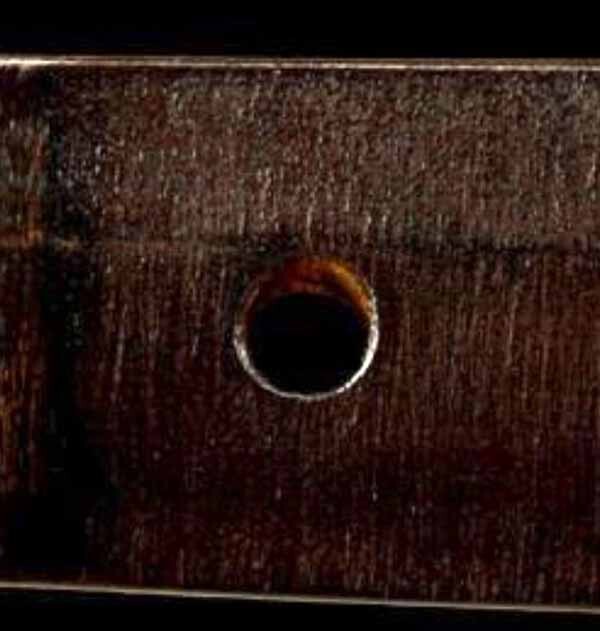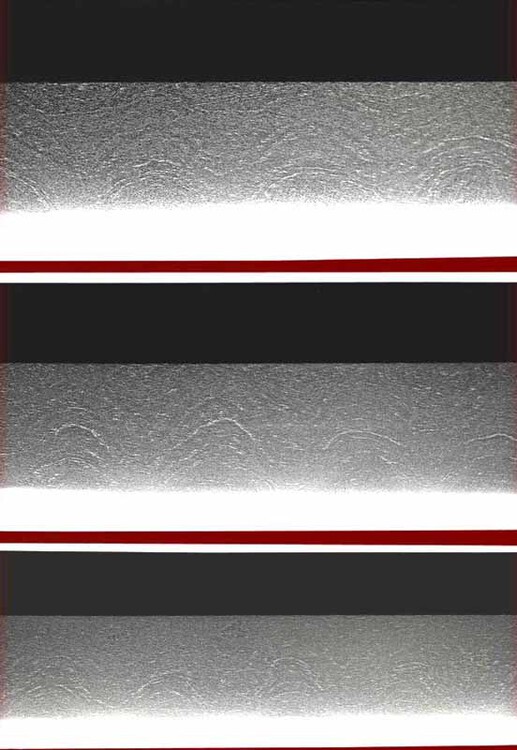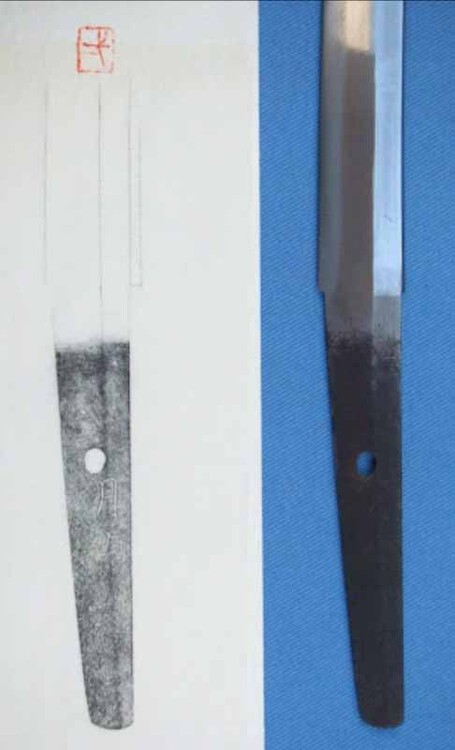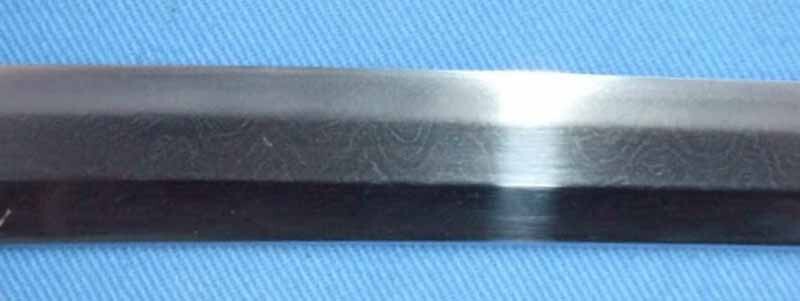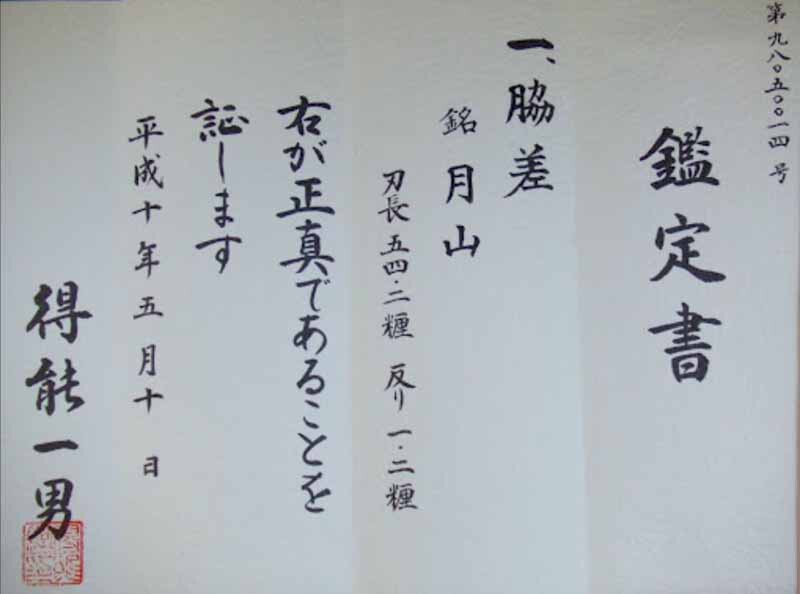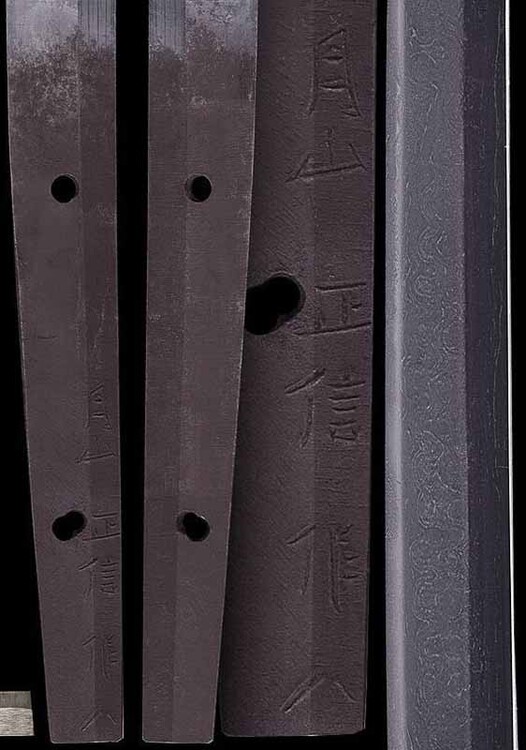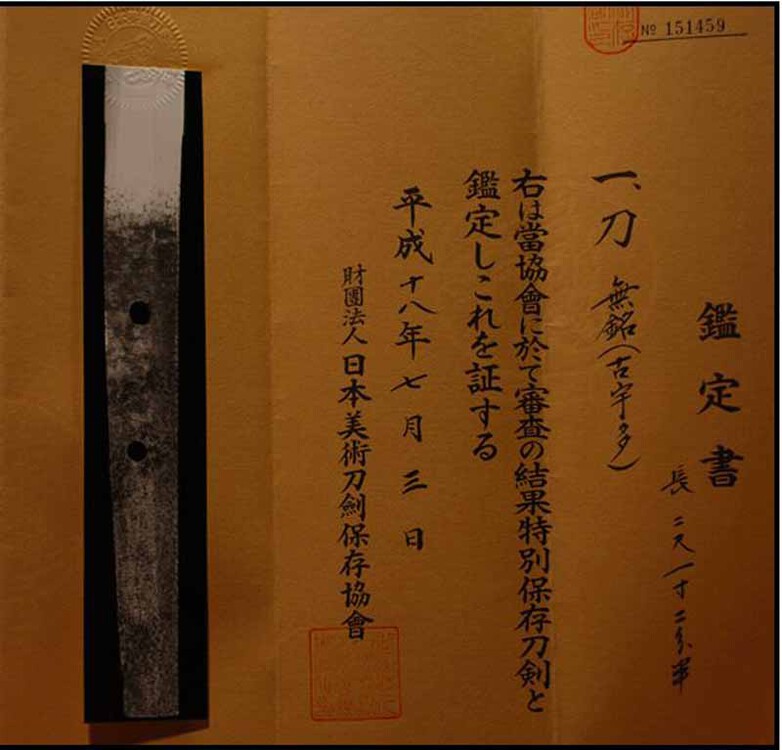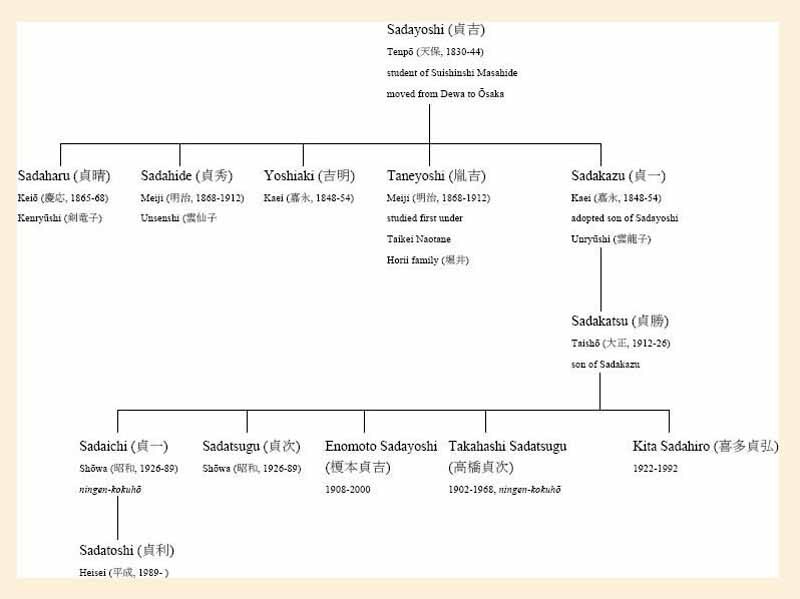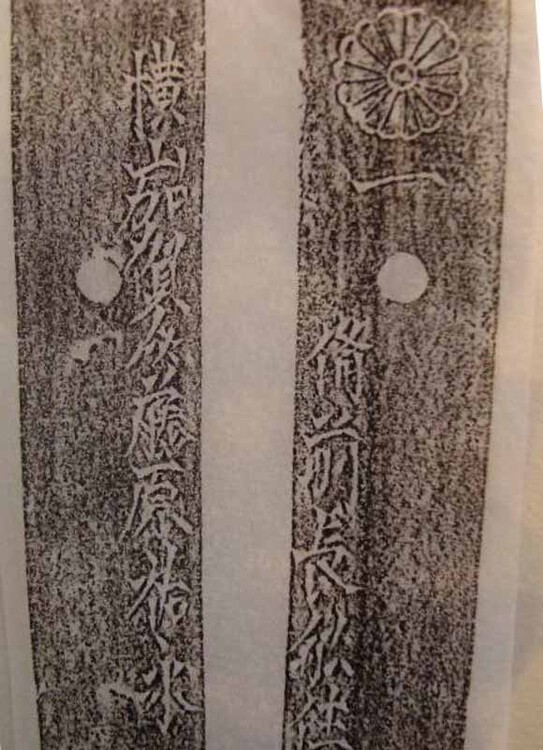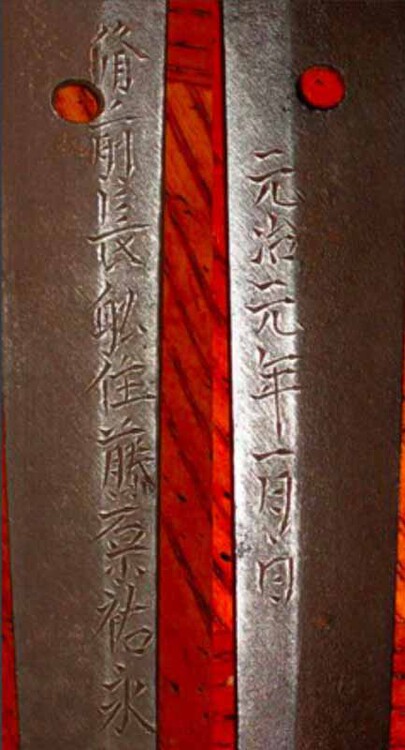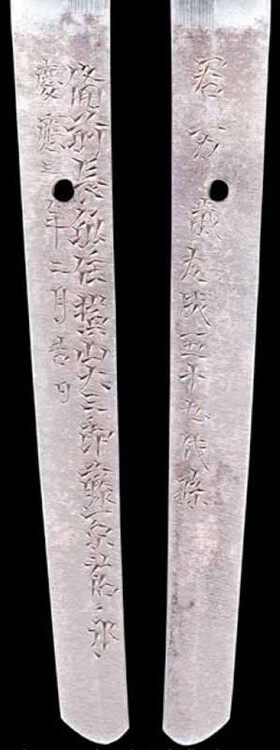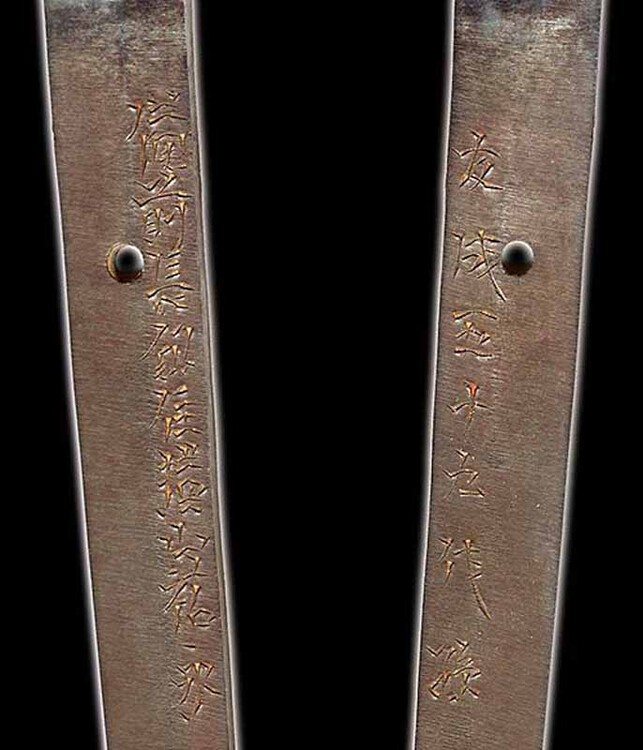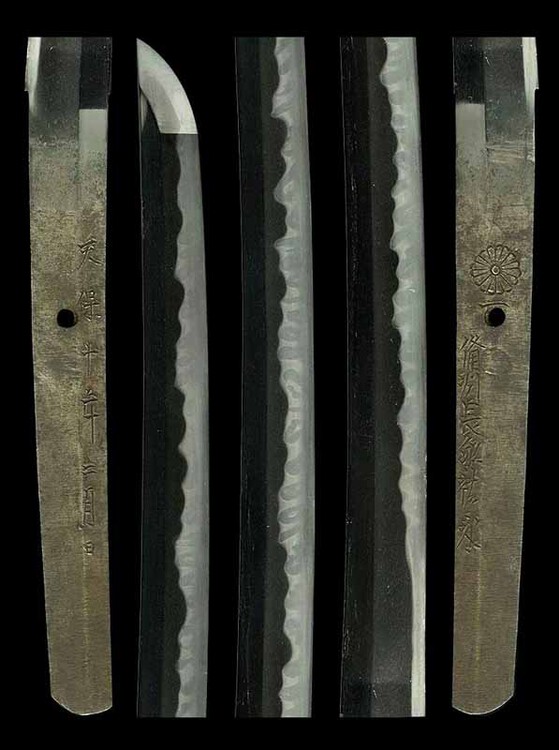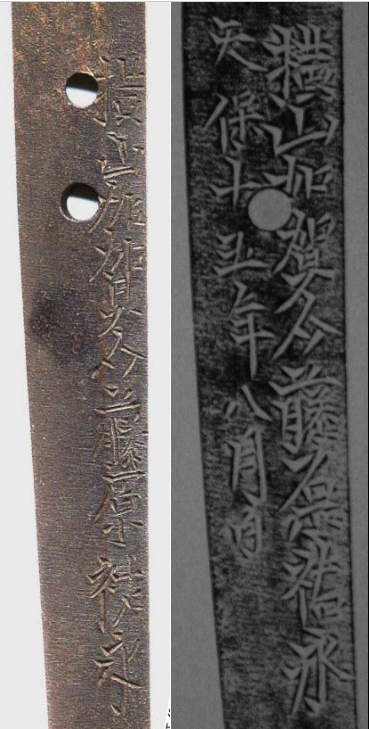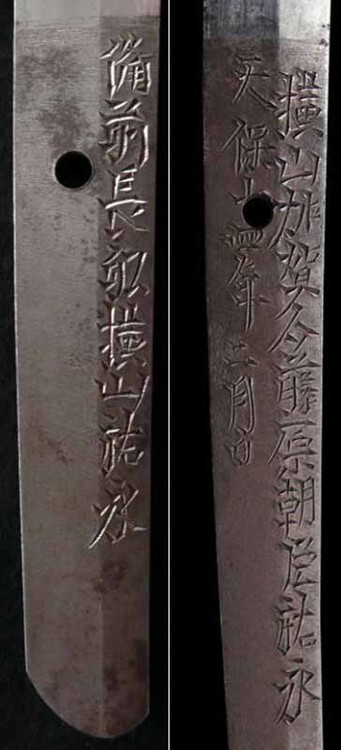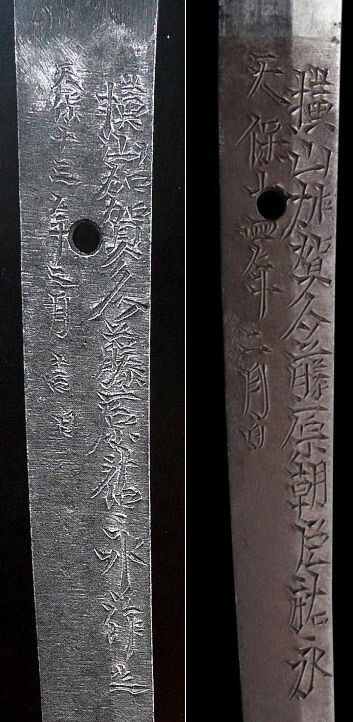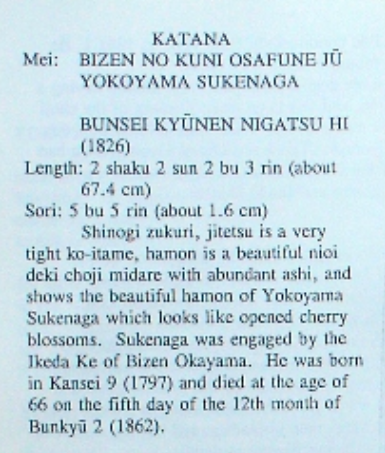-
Posts
1,029 -
Joined
-
Last visited
Content Type
Profiles
Forums
Events
Store
Downloads
Gallery
Everything posted by Eric H
-
Kanabo Masatsugu - 3 Generations http://www.nihonto.com/abtartkanabomasatsugu.html Eric
-
The motif for forgerie is almost exclusively financial gain. To add, cutting tests on Koto blades are very rarely seen if at all. similar swords with oo-kissaki, modeled after Kiyomaro, like the mentioned Kanetsugu are also made by: Higo Kuni ju Akamatsu Taro Kanehiro another member of the Kimura Minamoto Moriyoshi 2 pics to compare the basic pattern of the hamon above - detail of a Katana by Kanehiro - blade below - detail of the „Ichimonji“ - Kissaki Eric
-
...a signed blade, purportedly from Nambokucho period, with cutting test, in excellent polish. fully agreed with Jean's comment - no origami - saidan by a recognized tester usually inlaid in gold with his name and kao - bargain price, doesn't reflect what could be expected if the blade would be shoshin otherwise a fine sword BTW the hairline crack seems to be a file stroke Eric
-
The provided pic by Justin of the ayasugi hada is too dark so the details are not clearly discernible. I have improved this picture, the pattern is now clearly visible. Do you still insist on your opinion the blade isn‘t Koto but instead of that Shinshinto or later? An explanation based on facts would be welcome. Eric
-
Dr. Kazuo Tokuno (1933-2002), author of the Toko Taikan and several other books, was a reputed recognised expert. Eric
-
The last provided pictures are more meaningful. Anyway I add some pictures of a Wakizashi, 54.2 cm, ubu, one mekugi ana with niji-mei Gassan. It‘s a work of a Gassan in Meiji jidai according to the origami by Kazuo Tokuno...there is no direct attribution to one of the Osaka-Gassan active in Meiji period. Eric
-
There is to distinguish between Ko-Gassan and Osaka-Gassan. The Koto Gassan line disappeared suddenly at the end of the Muromachi period, Tensho jidai, and there are no existant Gassan works in the Shinto period. Gassan Sadayoshi (1800-1870) reestablished the Gassan Tradition and revived the technology of producing the ayasugi-hada. This group is called Osaka-Gassan and is active until the present time. When needed the experts of NBTHK use the „ko“ in their origamis. The Katana in question doesn‘t fall in this category. Especially modern Gassan hada consists of rather tight Jigane compared to Ko-Gassan or gendai-Gassan. Gassan Masanobu - suriage - 65.1 cm - late Muromachi period, Eisho (1504) NBTHK origami Ko-Uda Osaka-Gassan lineage Eric
-
Well, I have provided these examples as a general information. Read carefully...early mei reportedly...BTW do you know who runs this homepage?...obviously not The Ganji gannen pic is from a member of this Board, if you dig deep enough, you will have your "link" you always penetratively ask for. Eric
-
Some additional information on the Sukenagas 1 - early mei reportedly dated Bunsei 7 - 1824 2 - NTHK origami states nidai Sukenaga 3 - dated Genji Gannen 4 - dated Keio 3 - 1867 5 - signed Tomonari gojukyu daison Eric
-
The sword was offered sometimes last year in a Sword Shop in Japan. It is confusing with these Sukenagas...first, second, possibly third generation. The blue Hawley lists 2 Sukenaga -1830 -- 1844- with different ratings. Sesko Lexikon dates Sukenaga first generation 1830-1844, second generation 1848-1854, and there are signatures between 1850 and 1865 Eric
-
Since this thread deals also with the subject of gimei and questionable papers and attributions, herewith a Sukenaga, tachi-mei, dated Tenpo 10, 1839. The mei is incredibly different of Sukenaga's mei one would expect from this time, although slight changes can always be observed inside and later of this period. Eric
-
It is a commonly heard saying that the blade confirms the maker, not the signature. The place to start is the blade. Nakago - Kantei - Appraisal The nyusatsu kantei should be a means to distinguish individual blades due to the understanding of the sword itself. Also if at the kantei the nakago remains hidden until the very end, the attention should be given yet on the shape, the niku, the characters of the mei, the yasurime etc. Here I remember the words of Sato Kanzan: When viewing a sword, the professional examines first the nakago and then the blade, the amateur looks first at the blade and only then at the nakago. This may be sound somewhat arrogant, but this means of course when judging a sword in the literal sense to verify accurately first of all the mei and the nakago. (from an article by Tanobe Michihiro) Eric
-
Roy as already stated a new polish with the appropriate costs is justified when the sword is shoshin and preferably with ubu nakago...that said, the mei on your sword is not convincing. Eric
-
Eleven years are between these two signatures, the left one is Tenpo 3, 1832, the other as said Tenpo 14, 1843. The differencies in the tagane work are barely noticeable. Eric
-
...hits the nail on the head I have found the chiseling of Sukenaga‘s mei has changed slightly over the times. However in the book „Cutting Edge“, Swords in the British Museum, the listed Nr. 50 Yokoyama Sukenaga, p. 72, dated 1842... the same pictured as Yokoyama Sukesada... a simple writing error and not of importance, but what is eye catching is the ugly cut mei, date 1842...other details also not in accordance left aside. pic: left date Tenpo 13 - 1842, right Tenpo 14 -1843 Should the left mei be correct than Sukenaga has suffered a serious attack of Parkinson Roy, it's sometimes not easy to make the right decision :D
-
There are listed on your home page Katanas by Sukenaga and Sukekane...are these the two items you intend to polish? http://collectorsloot.homestead.com/Civilinfo.html That Sukenaga with date Ansei...is not a work by Sukenaga first generation and the mei when compared with Sukenaga II seems not to be in accordance. I‘m amused to see how general informations on this smith are so different. Eric
-
Hagire is considered a fatal flaw by collectors, affected blades lose substantial value. There are several posts on the NMB dealing with this topic. pic: Wakizashi by Tadatsuna II with hagire visible on both sides. Eric
-
MOKUME As the extreme state of ITAME containing straight grain ends up showing almost no difference from MASAME-HADA, the same could happen to MOKUME in relation to ITAME if the difference is a matter of relativity. That is, there are certain types of MOKUME very difficult to distinguish from ITAME. However, the terminology is not of primary importance. What is essential here is to understand different types of grain formations as factors to facilitate a KANTEI process. It is quite common to find some MOKUME contained in an overall ITAME-HADA. The greatest majority of blades, from Koto to Shinshinto, is made in ITAME-KITAE. In distinguishing a great many swords according to province, school and so on, you can supplement your analysis by taking other factors into consideration, in sword identification, there are other even more dominant factors that can make your conclusion more definitive in terms of Ji. Several members have given their opinion and hints: Paul: Koto Gassan Matt J: Shitahara Thomas C Helm: Hayama Enshin Chris Bowen: Satsuma I have picked up these ideas and the smiths I have listed show occasionally this form of whirlpool defined Mokume in their works. Koto Gassan, Norishige with his matsukawa hada, Naotane with his uzu hada. Shitahara is also a good hint. Hayama Enshin from the Kiyomaro group with tight ko-itame mixed with ko-mokume. Satsuma Masayoshi‘s blades sometimes displays areas of o-hada. It has to be remembered: some works produced by...are characterized with... Norishige‘s kitae doesn‘t have obligatory the wood burl, but it‘s an important kantei point Hankei, his kitae sometimes described as a running o-itame, aimed to create Norishige's hada Naotane worked in different styles, his uzu hada is an important kantei point Eric
-
Gassan - Koto - Kitae: Ayasugi hada that is hadamono and has typical Gassan hadaware Norishige - Koto - Kitae: Whirlpool itame that is matsukawa hada and has thick ji-nie and strong chikei Hankei - Shinto - Wakizashi - Kitae: Itame with Masame - O-Mokume Naotane - Shinshinto - Wakizashi - Kitae: uzu hada - whirlpool like Mokume Eric
-
Mr. Robert Benson is a Japanese trained togishi and expert with great experience and knowledge...what is his opinion on this Katana?...age, school, ev. smith. Eric
-
Some works produced by the Shitahara‘s in Bushu are characterized with perfect Mokume - until now I havent seen in pictures an example - such a pure Mokume-hada is known as „Jurin-Moku“ meaning wood burl. There are others associated with wood burl, f.e. - Norishige, Gassan, Hankei, Naotane. I would suppose, that Jurin-Moku is displayed in a smaller execution and not as bold as in this Katana. From the pics hamachi - almost not existent - and munemachi are not in line. The nakago looks to be old. Has this Katana been polished recently?...is it Japanese polish? BTW yakumo hada was used by some smiths in forgeries of Soshu works. Eric
-

The Kiseru and Tobacco in Japanese History
Eric H replied to watsonmil's topic in General Nihonto Related Discussion
-
This hada is seen on shinshinto swords and is called yakumo gitae, clustered clouds, ostentatiously outstanding hada containing glittering elements sometimes seen on blades by Rekko and Hamabe Jukaku. Eric
-

The Kiseru and Tobacco in Japanese History
Eric H replied to watsonmil's topic in General Nihonto Related Discussion
I like this tabakoire with its kiseruzutsu... of special interest is the tooled or stamped leather with adornment of colored lacquer I believe...amusing ojime. The tabakobon at Zeller auction has been sold for € 2,000 hammer price. Eric




